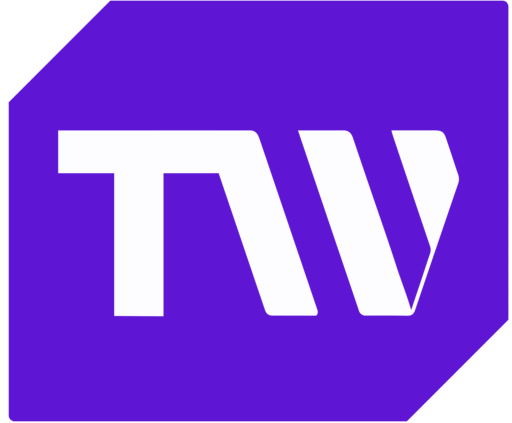Asana vs. Trello: Which SaaS Tool is Best for Project Management?
The development of several SaaS (Software as a Service) project management tools has provided solutions to traditional flaws. For instance, these tools ease the difficulty of keeping track of projects, team members, and clients. However, they have also given rise to another challenge.
Newbies and experts seeking the best productivity tool may find it challenging due to the variety of options available. Luckily, this article will explore two of the big names in SaaS tools for project management: Asana and Trello.
In the end, you’ll be able to make a well-informed choice on the SaaS tool that best suits your project management style and practice. Let’s dive in!
What You Should Consider While Choosing Project Management Tools
Asana and Trello are popular productivity tools for workflow automation, task tracking, and assignment. They can also be used to foster team collaboration with features that allow communication and file sharing between team members and clients.
In order to select the best project management tool for your needs, you’ll have to consider the following:
Ease of Signing In: The first thing to consider when choosing between software is the ease with which you can sign up. The requirements to sign up successfully, the verification process, and the time it takes to get full access are all valid points to consider.
Unique Features and Functionalities: You need to look for a SaaS tool with features suitable for your project. Some projects require more collaborative features, while others prefer simple yet well-structured task organisation.
Scalability: This is the ability of a SaaS tool to accommodate your team’s growth and task requirements—in terms of number and complexity.
Software Integration: Another aspect to consider is the software’s ability to integrate with other software. Integrations add more functionality to your tool, so this is pretty important.
It’s also important to know your needs and priorities. For example, a company owner with team members would need a platform that supports collaboration and complex functionalities. In contrast, a solopreneur would need a very easy-to-use platform that they can navigate and keep up with.
Let’s examine these tools individually, providing a brief background of each.
Asana and Trello: An Overview
Asana was founded in 2008 by Dustin Moskovitz and Justin Rosenstein and has since become one of the most commonly used SaaS tools for project management. It provides a more structured way of planning, organizing, and automating workflows.
Trello was developed three years later—in 2011, to be precise—by Atlassian, Joel Spolsky, and Glitch, and is currently one of the top contenders in the world of project management as a productivity tool. Trello is known for its Kanban Board style, flexibility, visual appeal, and simplicity.
If it is your first time using either platform, you will be required to provide basic information about yourself, such as your name and email address. In addition, the ease of onboarding on both platforms is pretty much the same, taking only a few minutes to set up.
Asana vs. Trello: Feature Comparison
While Asana and Trello organize, automate, and facilitate tasks, they differ in the style of offering those services. Certain features may have similar functions in Asana and Trello but are named, situated, accessed, and structured differently.
Let’s highlight a few of those peculiarities below;
1. User Interface
Although Asana’s user interface is more complex than that of Trello, it is also well-structured and uncluttered.

On the other hand, Trello is more user-friendly, interactive, and easier to navigate. This is why first-time productivity app users tend to gravitate here.

2. Creating a Project vs. Creating a Board
By default, workflows in Asana are called projects, while Trello uses the “board” terminology, owing to its Kanban Board style.

However, most first-time users prefer Trello’s board style because of its visual appeal and intuitive nature. More on this later.

Image showing where to click to create a board on Trello
3. Kanban Boards vs. List Views
Asana offers four different default viewing options for workflow organization and viewing. These include the Gantt view, Calendar view, Board view, and List view.

On the other hand, Trello is known for its board view, which is also known as the Kanban board view, an agile project management tool. If you are on the free plan, you only have access to the board view on Trello. To have access to other views, you would have to use the “Power-Ups” option.

4. Display Customization Features
When it comes to display customization, you can only customize the background of your main page on Asana. On the other hand, Trello offers the option to customize both the main background and the different boards you create. You can do this by choosing a solid color or an image from the plethora of images accessible on Trello.
Asana vs. Trello: Pricing and Plans Available
Another key factor that can affect your choice of project management software is the price of their paid plans. If you’re on a tight budget, it’s advisable to go for the cheaper yet efficient tool.
Let us consider the plans available on both Asana and Trello and how much they cost.
For Asana
Asana provides more paid plan options, as shown below:
| Asana’s Paid Plan | Yearly Subscription (Divided Monthly) | Monthly Subscription |
| Personal | $0 | $0 |
| Starter | $10.99 | $13.49 |
| Advanced | $24.99 | $30.49 |
| Enterprise | Price is given upon request | Price is given upon request |
| Enterprise+ | Price is given upon request | Price is given upon request |
If you have a large team and are seeking to pay for either the Enterprise or Enterprise+ plan, you’ll have to reach out to the sales team.
For Trello
Trello offers three tiers of paid plans and is significantly cheaper than Asana, making it a preferred option for growing teams. Below are the plans:
| Trello’s Paid Plan | Yearly Subscription (Divided Monthly) | Monthly Subscription |
| Free | $0 | $0 |
| Standard | $5 | $6 |
| Premium | $10 | $12.50 |
| Enterprise | Price is given upon request | Price is given upon request |
Like Asana, you’ll need to contact Trello’s sales team to access the enterprise plan.
Asana vs. Trello: Integration Options
As a project management tool, both Asana and Trello offer the ability to integrate other software for enhanced productivity.
This includes Customer Relationship Management (CRM) software, software for sending and receiving emails, top analytical tools, and other productivity tools.
On Trello, the integration option is available when you click on Power-Ups. Trello has more than 100 Power-Ups available for a created board (project).
Both Asana and Trello can integrate more than 100 applications. Still, Asana beats Trello by a close margin as it supports importing files even from Trello, while Trello does not offer the same.
Asana vs. Trello: Project Management Methodologies
Asana and Trello are both project management tools that fit into different project management methodologies quite differently. Let’s explore how.
For Agile and Scrum Methodology
The features in both Asana and Trello are suitable for Agile/Scrum methodology. Here’s a quick breakdown:
- The board view in both Asana and Trello mimics the agile boards suitable for stories and tasks; the boards also allow the creation of sprint or iteration backlogs.
- Teams ‘ progress can easily be tracked with the board and list view on both platforms.
For Kanban Methodology
- Asana and Trello Boards are structured in a natural Kanban-style workflow
- Work-in-process (WIP) limits can be configured like in the natural Kanban board.
For Hybrid Methodology
The robust features of Asana allow for an effective combination of agile and waterfall practices. Teams can also customize processes by blending different techniques.
When it comes to how each tool fits into the various project management methodologies, Asana and Trello are highly flexible.
However, Trello leans more towards the simplicity of Agile and Kanban visualizations, while Asana provides more capabilities to accommodate rigorous waterfall-style planning and processes.
Asana vs. Trello: Pros and Cons
Firstly, let us consider a few of Asana’s pros and cons:
| Pros | Cons |
| Asana offers more view options on the free plan | It has fewer overall features on the free plan |
| On the free plan, Asana allows more guests and the creation of boards | Asana is slightly more complex to use |
| It contains better team collaboration features and options |
Now to Trello:
| Pros | Cons |
| Trello is easier to set up and use | Trello does not have many team collaboration features on the free plan |
| Trello offers more visual customization options | Trello does not have the list view feature |
| The Standard plan option is cheaper on Trello |
Asana vs. Trello: Making a Choice
In conclusion, both Asana and Trello offer robust features for project management, catering to different needs and preferences. While Asana excels in task organization and collaboration, Trello stands out with its visual interface, flexibility, and simplicity.
Ultimately, the choice between the two depends on the specific requirements and workflow of your team. Smaller teams usually tend towards Trello, while larger organizations find Asana more suitable for their project needs. Regardless of the decision, both platforms empower teams to streamline their projects and achieve greater efficiency.
Subscribe to our newsletter
In this article.
- What You Should Consider While Choosing Project Management Tools
- Asana and Trello: An Overview
- Asana vs. Trello: Feature Comparison
- Asana vs. Trello: Pricing and Plans Available
- Asana vs. Trello: Integration Options
- Asana vs. Trello: Project Management Methodologies
- Asana vs. Trello: Pros and Cons
- Asana vs. Trello: Making a Choice


